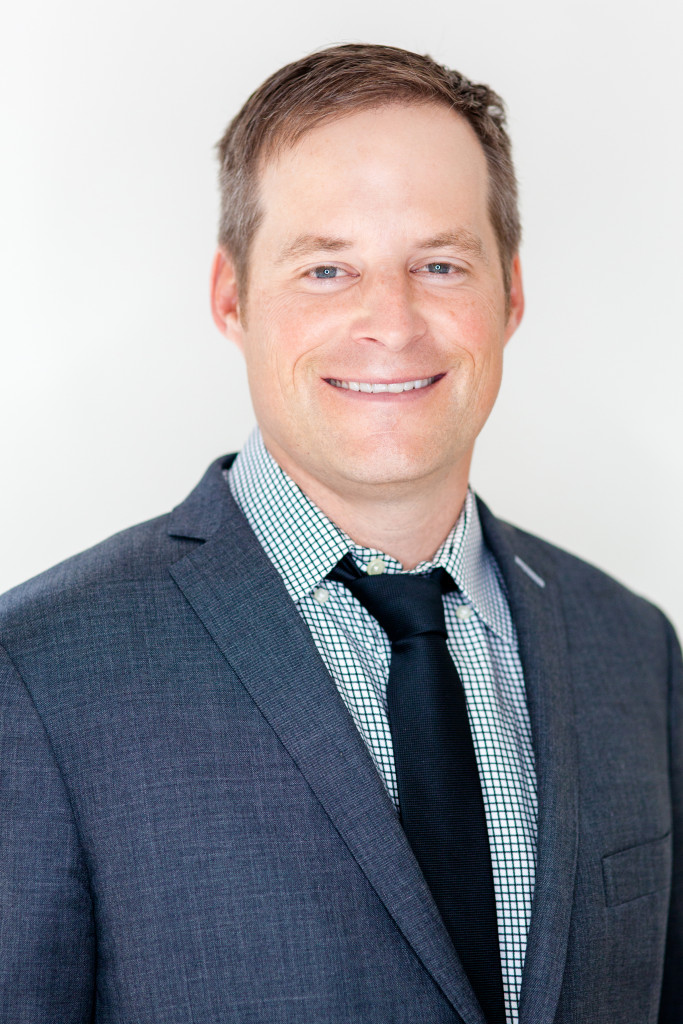Small Business
Small Business Optimism Is Up for 2019
December 7, 2018 American small businesses plan to finish 2018 with a bang, according to the fall 2018 Bank of America Business Advantage Small Business Owner Report. And they’re optimistic about the year ahead.
American small businesses plan to finish 2018 with a bang, according to the fall 2018 Bank of America Business Advantage Small Business Owner Report. And they’re optimistic about the year ahead.
In the report, based on a semiannual survey of 1,000 small business owners across the country, 80% of entrepreneurs say they are confident that their 2018 year-end revenue will exceed that of 2017. And several business growth indicators are also up year-over-year, such as revenue expectations and expansion and hiring plans.
Projecting into 2019, 57% of business owners believe their revenue will increase (compared to 51% in fall 2017), 67% plan to expand (compared to 59% in fall 2017) and 27% plan to hire, compared to 16% in fall 2017. Significantly, 15% intend to apply for a loan, versus 8% in fall 2017.
Separately, according to the latest quarterly Wells Fargo/Gallup Small Business Index, optimism among small business owners increased substantially over the last quarter. The quarter, according to the index, received a score of 129, which is 11 points higher than last quarter’s score of 118, and apparently the highest in the survey’s 15 year history.
Small business owner survey respondents said positive business financials are largely the cause for their optimism. Eighty percent of respondents rated their financial situation as “very good” or “somewhat good,” while 84% said they expect their financial situation to be “very good” or “somewhat good” in the coming year. A record 55% of business owners reported increases in revenue, with 62% anticipating revenue increases in 2019. In addition, 74% said they had good cash flow in the past 12 months, and 78% said they expect their businesses to have good cash flow over the next year.
Small business owners are not without challenges. Hiring and staff retention issues were among the top concerns for small business owners, according to both reports. According to the Bank of America report, in 2018, turnover affected 24% of all small businesses, with 11% losing 10% or more of their workforce. For business owners who sought to hire new employees, 50% said the tightening labor market had a direct impact on their ability to find and hire qualified candidates. According to the Wells Fargo report, 18% of survey respondents said hiring and retaining staff was their top challenge.
Small Business Forums
November 30, 2018If you’re a business owner with small business questions, we recommend the following helpful sources:
Small Business Forum
This online community is geared towards storefront businesses, is free to join, and is not filled with ads.
Business Advice Forum
This online community is geared towards online businesses, is free to join, and has minimal ads.
If you work in finance, then a great place to connect with your peers would be the deBanked Forums or a deBanked event.
Survey Reveals U.S. Small Business Owner Outlook
August 16, 2018Confidence among small business owners in the U.S. is up, according to a quarterly online survey produced by CNBC and SurveyMonkey. Of more than 2,000 small business owners polled from July 27 to August 5 this year, 58 percent of respondents say business conditions are “good,” up from 53 percent last quarter and up from 39 percent a year ago.
According to the survey, about 33 percent of small business owners anticipate hiring additional full-time employees this year, which is seven percentage points higher than a year ago. Sixteen percent of small business owners said they currently have open positions that they have been unable to fill for at least three months. This CNBC/SurveyMonkey survey polled exactly 2,085 self-identified small business owners 18 and older.
Study Reveals Positivity and Concerns of Small Business Owners
June 5, 2018According to a survey conducted by SmartBiz Loans and released today, almost 57 percent of small business owners said their outlook on business growth over the next 12 months was “fairly positive” or “positive.” And 35 percent of respondents reported that the new tax plan has already caused them to make changes in their business, with ten percent reporting that they are actively investing in new equipment or staffing.
“This positivity points to the resiliency of small business owners,” said CEO of SmartBiz Evan Singer. “They know circumstances are changing, and they’re adapting as needed.”
As for concerns, according to the survey, 31 percent of respondents said that securing lower cost financing was a priority concern. Twenty-two percent of small business owners “agree” or “strongly agree” that access to credit has become easier in the last few years, however 49 percent of small business owners “agree” or “strongly agree” that the cost of credit has increased.
Regarding non-credit related concerns, 53 percent of small business owners named the cost of providing health insurance for employees and a key business consideration. And 49 percent said that finding and hiring quality employees was a top concern.
Nine out of 10 small business owners said they value experience over education in new hires, while 31 percent said they were willing to hire candidates who lack some qualifications and train them. In what the report described as a “difficult hiring environment,” in order to retain employees, 51 percent of owners said they were offering more flexible work arrangements and 33 percent said they were increasing wages.
Report Demonstrates How Online Lenders Benefit Economy
May 31, 2018 A report on “The Economic Benefits of Online Lending to Small Businesses and the U.S. Economy” was released yesterday, using data from 180,000 U.S. small businesses that represented nearly $10 billion in funding from 2015 to 2017.
A report on “The Economic Benefits of Online Lending to Small Businesses and the U.S. Economy” was released yesterday, using data from 180,000 U.S. small businesses that represented nearly $10 billion in funding from 2015 to 2017.
The report used data from five online lenders, including OnDeck, Kabbage and Lendio, and was sponsored by the Electronic Transactions Association (ETA), the Small Business Finance Association (SBFA) and the Innovative Lending Platform Association. The report was researched by three economists at NDP Analytics, an independent research firm.
One of the key findings was that the ten billion dollars funded from 2015 to 2017 by five of the top alternative small business lenders generated $37.7 billion in gross output and created 358,911 jobs and $12.6 billion in wages.
“I think the most important takeaway from this study is that small businesses are benefiting from a wide variety of choices in lending products,” said Jason Oxman, CEO of the ETA. “And, in particular, the online small business lenders have provided really a remarkable amount of working capital to small businesses in this country.”
Oxman told deBanked that he was surprised to learn from the report the percentage of borrowers that operate extremely small businesses. According to the report, 24 percent of online business borrowers operate businesses that have less than $100,000 in annual sales. And two-thirds of online business borrowers had less than $500,000 in annual sales.
“These are clearly small businesses,” Oxman said. “These are companies that obviously have capital needs and are getting those needs met by online small business lenders.”
New York State was a focus of part of the research. According to a press release for the report, data extracted from it indicated that “overall, the small business loans provided by online lenders [from 2015 to 2017] generated $2.5 billion in gross output and created 20,154 jobs with over $795 million in wages” for communities in New York State.
“We [organized the report] with New York in mind,” said Steve Denis, Executive Director at the SBFA. “We wanted to send a message to show how much of an impact the online lending industry had on the state.”
Other interesting data from the report include:
— 75 percent of U.S. businesses have less than 10 employees.
— 22 percent of small business owners use their personal savings to expand
— Online lenders offer loans to companies in all stages of their life cycle and the distribution of company age is relatively uniform.
“[Alternative small business lending] is creating a lot of economic activity,” Denis said. “We’re helping to create jobs, and we need to protect this tool. It’s a valuable resource for businesses…and this [report] demonstrates how important it is to the economy.”
Demand for Tax Guard Grows, and Receives Private Equity Investment
April 19, 2018 Hansen Rada, CEO, Tax Guard
Hansen Rada, CEO, Tax GuardTax Guard announced on Monday that it received an investment from Falfurrias Capital Partners, a Charlotte, NC-based private equity firm.
“What really excites me about [partnering with Falfurrias Capital Partners] is the breadth of experience that they bring to the table,” said CEO and co-founder Hansen Rada. “They have some real icons in banking that are now going to be members of the board and will continue to assist us from a strategic point of view as we begin to expand our platform.”
Tax Guard generates tax liability research on companies and individuals for lender clients that want a clearer picture of who they might be lending to.
“Across the board, 22 percent of businesses owe money to the Internal Revenue Service, and no lien has been filed,” Rada told deBanked. “In other words, there’s no public record of this. That’s where Tax Guard [comes in]. We identify these tax liabilities before the lien has been filed to notify lenders of potential risk.”
Rada said that since 2010 tax liens have dropped by 70 percent, yet the number of people and businesses that owe money has gone up steadily. This is because of a tactic the IRS uses, according to Rada, where it issues fewer liens which allows people’s credit scores to rise. When credit scores rise, people and businesses can take out loans that they can ultimately use to pay back to the government in taxes.
Regardless of whether or not this is a tactic, in addition to fewer liens, even existing liens have become more difficult for lenders to see. In March, Experian, one of the three major credit bureaus, said that it would stop reporting all tax liens from its consumer credit reporting database this week. And the other two major credit bureaus, Equifax and Transunion, have already stopped including civil judgments and tax liens on their consumer credit reports.
Rada agreed that these developments are positive for his business and said that this continues to validate the company’s value proposition. Specifically, Tax Guard provides reports to commercial lenders to let them know, in real time, if a business fails to pay its taxes.
“Our clients are anyone that cares if the people or businesses they are lending money to owe money to the IRS,” Rada said.
Rada said Tax Guard does business with about 350 lenders, including a national bank, community banks and alternative online lending companies.
So how does Tax Guard conduct its research? It contacts the IRS directly about specific people and companies. For the most part, this data-collecting process can be done by anyone. But it takes a long time and Rada said they are able to bypass the “middleman,” like public record searches and county courthouses. Tax Guard gets paid by its clients per business/individual report that it produces, and it customizes pricing based on volume.
As part of the investment deal, four people connected to Falfurrias Capital Partners will be joining Tax Guard in some capacity. Chris Marshall, a co-founder of Capital Bank and previously a senior executive at Bank of America, will join Tax Guard as Executive Chairman. Marc Oken, co-founder of Falfurrias Capital Partners and a former Bank of America CFO, will join the Tax Guard board, along with Geordie Pierson, a principal at Falfurrias Capital Partners, and Joe Price, a former Bank of America CFO.
Founded in 2009, Tax Guard has 65 employees at its office in Boulder, CO.
How One Company is Helping MCA Brokers and Clients Through Credit Repair
March 5, 2018
Venture Credit Solutions, a New Jersey-based credit repair business, was created in 2016 by founder and CEO Joe Clapman. Because of extensive licensing and other legal conditions required to run a credit repair shop, the company didn’t start operating until the beginning of this year, with a soft launch at deBanked’s Miami event in January.
Formerly an MCA broker, Clapman saw firsthand that really bad personal credit could hinder one’s ability to get cash advances for their businesses, along with home mortgages and even jobs. So he started a consumer credit repair business. He is very clear about what he can and cannot do.
“We get erroneous items that do not belong on your credit report, off,” he said.
He cannot recoup people’s money or eliminate credit card debt. He does not guarantee that he will improve your credit score, but he maintains that when negative erroneous data is removed, generally FICO scores go up and people become eligible for more credit or better credit.
This can benefit MCA brokers by allowing them to take unfundable or less fundable MCA clients and turn them into additional clients for credit repair. Clapman said that brokers for credit repair can get a commission similar to a $15,000 to $20,000 MCA deal.
“We don’t have some secret handshake with Equifax and Experian,” Clapman said. “We can’t do anything you can’t do on your own.”
Instead, Clapman told deBanked that Venture Credit Solutions is a service-based company of researchers, who he calls “information givers,” that are trained in determining the accuracy of data on personal credit reports.
“Any data on your credit report has to be accurate to the letter,” he said.
Clapman and his team make money only when they are able to successfully prove inaccurate data and remove it from a customer’s credit report. Every line of a customer’s report is itemized and the customer is told beforehand how much they will pay Venture Credit Solutions if the company is able to prove that the data is inaccurate.
And data is either accurate or it isn’t.
“If someone tells me that something is accurately described on their credit report, it’s actually illegal for me to try and get it removed,” Clapman said.
While Venture Credit Solutions provides services to individual consumers, they do not advertise to the general public. Instead, they get business from brokers, who Clapman calls “referral agents.” These are MCA and real estate brokers, among others, who are trying to improve their client’s credit – if it has been inaccurately reported.
Clapman gave the example of an MCA merchant who signed a document allowing his broker to submit an application to only one funder. But the broker sent the application out to like 93 funders, severely damaging his credit because of all the credit inquiries.
“We can help him to get all these inquiries off,” Clapman said.
One of the core mantras at Venture Credit Solutions is “The client is your client.” This is important to Clapman because he wants to communicate to his referral agents that the company is not trying to steal their clients – by, for instance, finding the client a lower mortgage. Doing something like this would adversely affect the customer’s credit, which is exactly what Venture Credit Solutions is trying to improve.
“We’re trying to create a win-win process,” Clapman said. “The broker is winning because he’s not losing a client, he’s helping a client [and getting a commision.] And the client is winning because his credit is getting better.”
Clapman said that he is in talks with the New York and New Jersey police and fire departments to potentially help their members who might have erroneous data on their credit reports.
Venture Credit Solutions also has a program for startup companies, designed to improve and build the credit of entrepreneurs. The company now has 15 people working at its office in New Jersey and it plans to be onboarding at least an additional 30 within the next two weeks. Some will work remotely, but all will be in the US, Clapman said.
AmEx to Launch Small Business Loans on Lendio
April 20, 2016American Express is getting knee deep in small business lending and has chosen to go online.
The bank is partnering with small business loan marketplace Lendio to bring its merchant financing products to small businesses. This marks a step forward for American Express as it wants to look beyond its customer base and turn new merchants into borrowers.
Lendio CEO Brock Blake called the product a hybrid between a merchant cash advance and a bank loan ranging from $5,000 up to $2 million for two years. Merchants with a minimum revenue of $50,000 and two years of operating history can apply for this loan based on cash flow and credit card sales.
“This was a relationship that has been a long time coming,” said Blake. “We are fortunate to have won this deal and this opens the door for many similar relationships.”
In February this year, American Express ended a 16 year relationship with retail giant Costco. That partnership constituted 20 percent of the company’s outstanding loans which it hopes to recover by growing the small business loan revenue. The bank also featured its charge cards on online marketplace, Fundera for merchants to compare its business charge cards with traditional loans. To provide some context, Amex cards for small businesses funded $190 billion in purchases, up from $122 billion in 2010.
And as for Lendio — the company has been bullish about striking big ticket deals. The Salt Lake City-based loan marketplace funded $128 million in financing over 5000 small businesses, clocking in 1175 percent annual growth from the previous year.





























